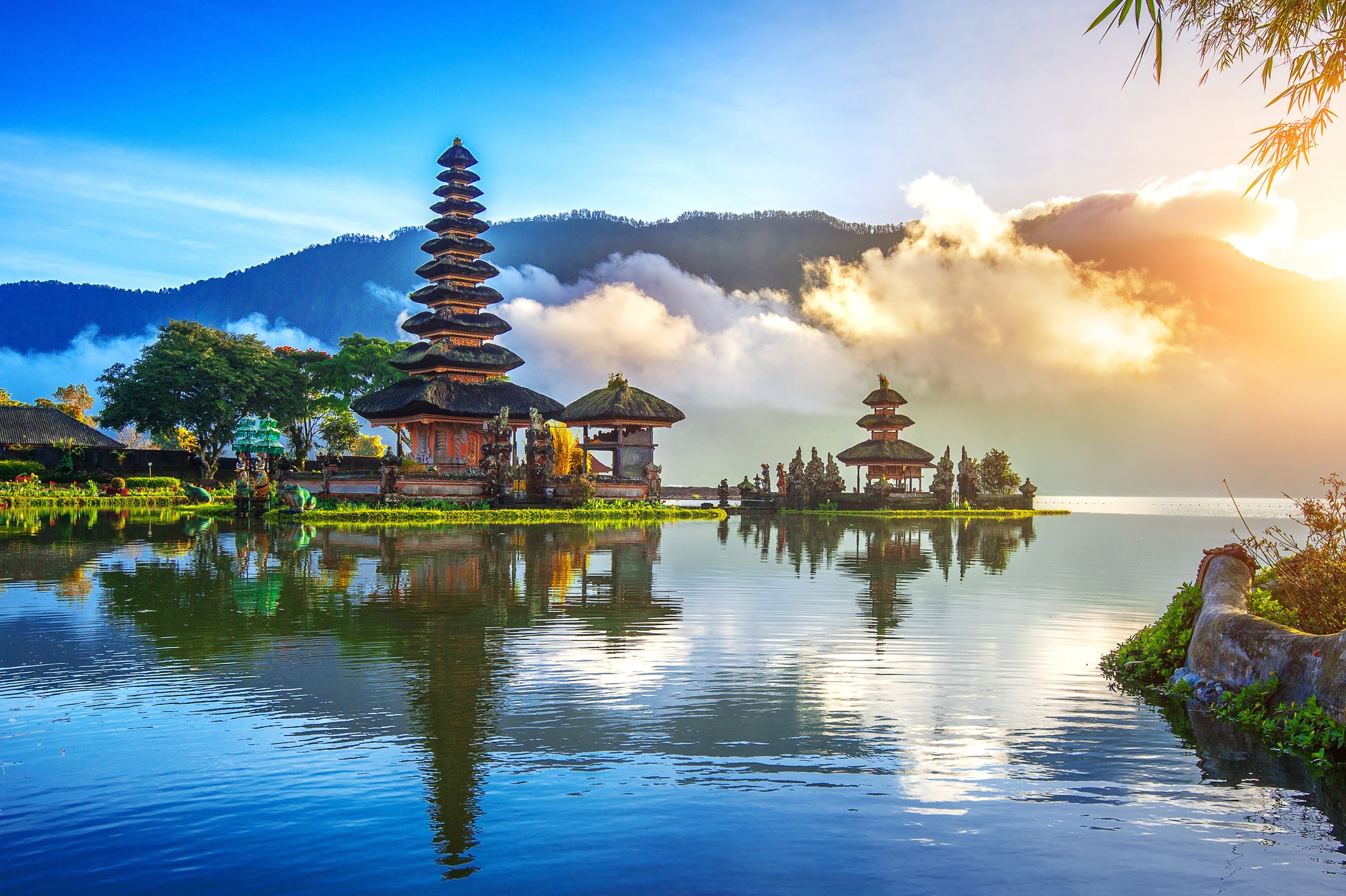The best time to visit Bali for a holiday – and how to swerve the wet season
From coastal towns to central mountain ranges, heres a holidaymakers’ guide to the Balinese weather seasons

The picture of blissful shores, buzzing markets and welcoming locals, Bali is a bucket-list destination for tourists longing to indulge in a new culture and the Great Outdoors – but the tropical climate has been known to put a (literal) dampner on dream holidays.
Bali boasts consistently warm temperatures and gentle conditions thanks to its position near the equator, with average annual temperatures that range from 29C to 32C. From the lush jungles of Ubud to the golden beaches of Kuta, tourism hubs greet visitors with clear seas and skies during the seven-month dry season but sunshine, rainfall, temperatures and humidity (especially in the wet season) all vary depending on the time of year.
Climate variations in Bali’s dynamic landscape mean the mountainous interior and idyllic coastline often see different levels of rainfall and humidity, and travellers should plan accordingly as they embark on hiking, beach and backpacking holidays to one of Indonesia’s most popular islands.
Read more on Bali travel:
Wet Season
When is it? November to March
Bali’s wet season takes place during the transitional period from winter into spring and lasts around five months. Sporadic showers come in short but heavy spells and the tropical rain storms are at their worst in December and January, bringing with them muggy, humid weather conditions and low visibility across Bali’s mist-covered landscapes – serious obstacles to days soaking in the sun on white sands and boat trips to coral reefs.
Dry Season
When is it? April to October
Clear skies, lower humidity and temperatures in the mid-30s from April to October are what make Bali’s comfortable dry season so popular with globetrotters. The sunny conditions bring great visibility and a gentle breeze ideal for watersports including windsurfing, snorkelling and scuba diving. Predictably, the inviting weather forecasts attract millions of international tourists each year, with Bali’s huge backpacking scene a staple of the Indonesian islands.
Best time to go
Central Bali
Bali’s cooler central mountain ranges are at their best in August, the driest month for a long-haul holiday and the height of summer. Interior towns such as Ubud, Bedugul and Bangli tend to see the island’s most rainfall during the wet season so hikes through rice fields to waterfalls, ornate temples and vantage points to watch spectacular sunsets are ill-advised between November and March as mosquitos take over the dense jungle, and humidity is at its most intense.
Coastal Bali
Unsurprisingly, tourism peaks during the intersection of the dry season and the UK summer holidays from May to August – temples and beaches can host hundreds while the weather is at its most settled. To avoid crowds at popular Bali coastal holiday destinations such as Kuta, Legian and Canggu, take a trip during the shoulder season months of April and October for a calmer stay, and to save on accommodation and flights. Bali’s sandy shoreline typically boasts hotter temperatures than its interior and temperatures rarely dip below 29C in summer.
January
Average temperature: 31C
Hours of sunshine per day: 6 hours
Average monthly rainfall: 382mm
Relative humidity: 81 per cent
February
Average temperature: 31C
Hours of sunshine per day: 5 hours
Average monthly rainfall: 286mm
Relative humidity: 81 per cent
March
Average temperature: 31C
Hours of sunshine per day: 6 hours
Average monthly rainfall: 236mm
Relative humidity: 81 per cent
April
Average temperature: 31C
Hours of sunshine per day: 7 hours
Average monthly rainfall: 144mm
Relative humidity: 81 per cent
May
Average temperature: 31C
Hours of sunshine per day: 7 hours
Average monthly rainfall: 73mm
Relative humidity: 80 per cent
June
Average temperature: 30C
Hours of sunshine per day: 7 hours
Average monthly rainfall: 53mm
Relative humidity: 79 per cent
July
Average temperature: 29C
Hours of sunshine per day: 7 hours
Average monthly rainfall: 37mm
Relative humidity: 78 per cent
August
Average temperature: 29C
Hours of sunshine per day: 7 hours
Average monthly rainfall: 16mm
Relative humidity: 78 per cent
September
Average temperature: 30C
Hours of sunshine per day: 7 hours
Average monthly rainfall: 53mm
Relative humidity: 79 per cent
October
Average temperature: 31C
Hours of sunshine per day: 7 hours
Average monthly rainfall: 77mm
Relative humidity: 80 per cent
November
Average temperature: 32C
Hours of sunshine per day: 6 hours
Average monthly rainfall: 119mm
Relative humidity: 80 per cent
December
Average temperature: 31C
Hours of sunshine per day: 6 hours
Average monthly rainfall: 326mm
Relative humidity: 82 per cent
Read more of our best Bali hotel reviews
Subscribe to Independent Premium to bookmark this article
Want to bookmark your favourite articles and stories to read or reference later? Start your Independent Premium subscription today.

Join our commenting forum
Join thought-provoking conversations, follow other Independent readers and see their replies